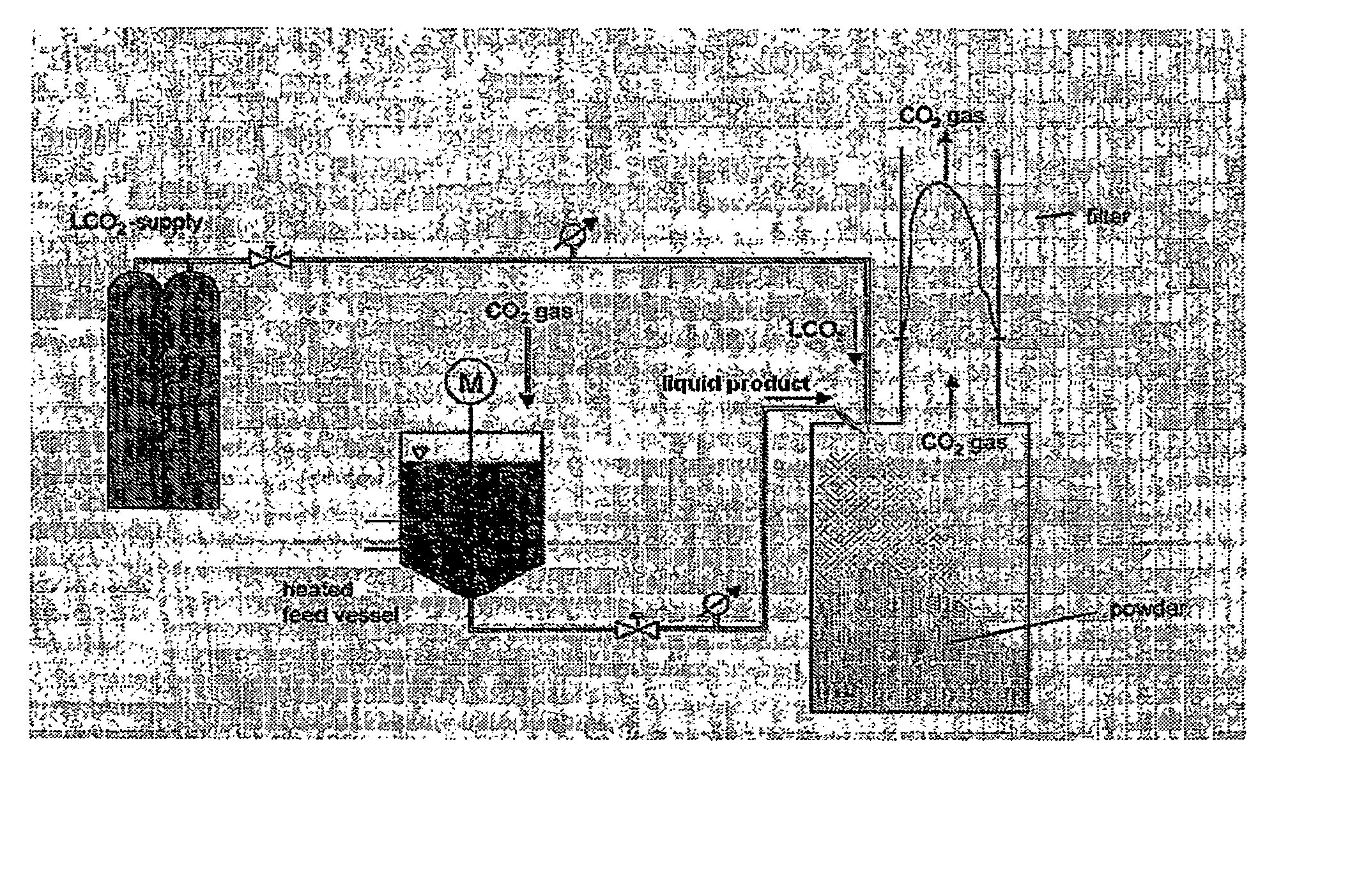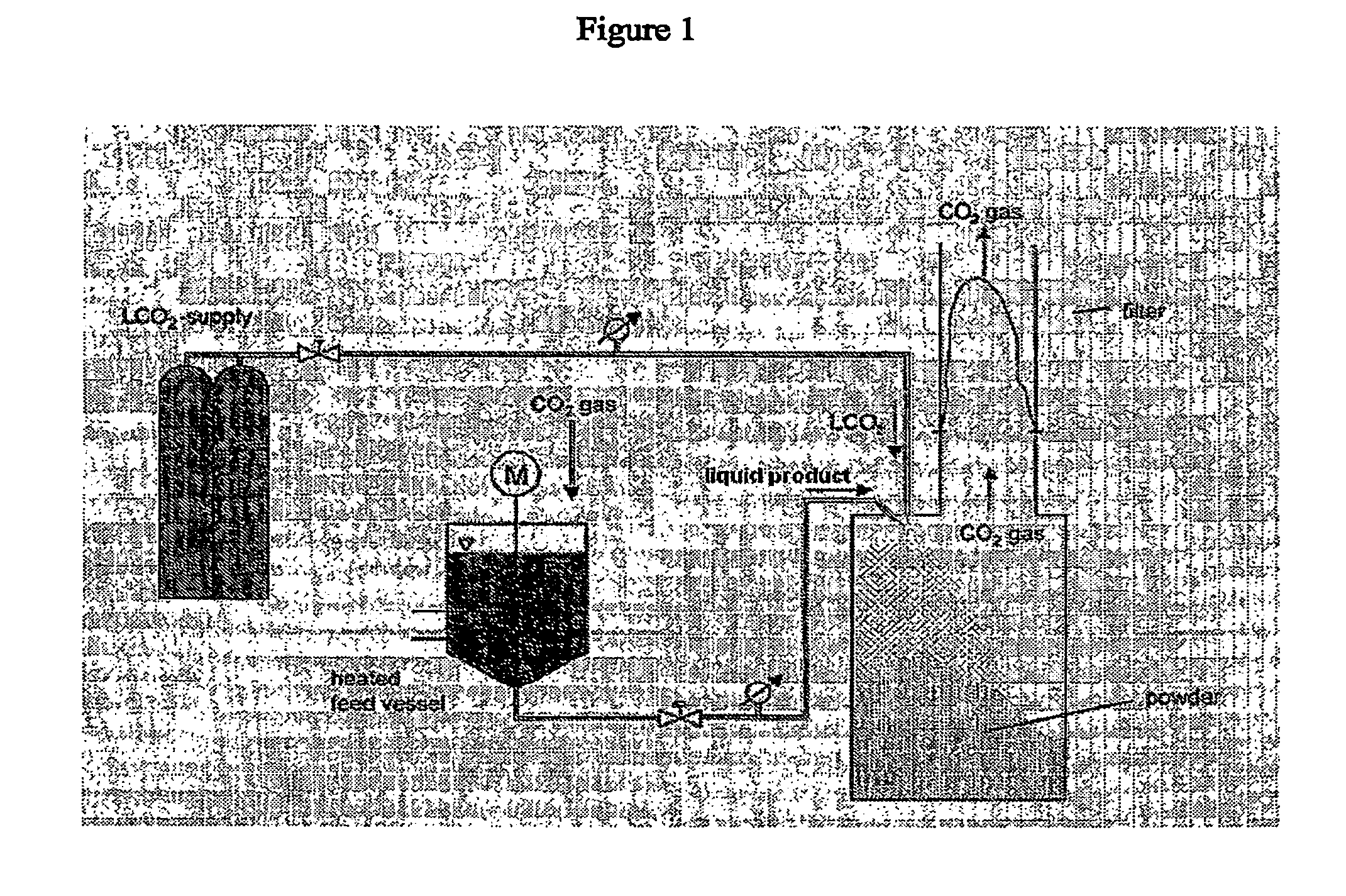Process and apparatus for cooling and atomizing liquid or pasty-like substances
a technology of atomizing liquid and substance, applied in the direction of domestic cooling apparatus, separation process, application, etc., can solve the problems of unsuitability of process, unsuitability of cooling process, and relatively rapid cooling of substances, which is very frequently required,
- Summary
- Abstract
- Description
- Claims
- Application Information
AI Technical Summary
Benefits of technology
Problems solved by technology
Method used
Image
Examples
example 1
Preparation of Microparticles According to the Process of the Invention
[0058] 1.1 Melting of the Materials and Drug Incorporation into the Matrix:
[0059] The substances to be processed (lipid and / or polymer mixture) are melted in a thermostated bath, at a proper temperature, depending on the substances used. A drug can be added to the molten matrix, under constant stirring. The molten mass is then poured into the feeding vessel of the atomizer, thermostated at a suitable temperature (so to keep the mass in the liquid form). Alternatively, this first melting step can be also performed directly in the feeding vessel of the atomizer, since such vessel is equipped with a stirring tool.
[0060] Alternatively a certain amount of solvent can be added to the mixture. This would allow the incorporation of a drug into the matrix prior dissolution into a suitable solvent, or allow the preparation of compositions by intimately mixing different excipients (such as polymers and lipids of differen...
example 2
Lipid Microparticles (LM)
[0081] Materials
[0082] In the examples described below the following materials were tested:
[0083] Imwitor 900 (glyceryl monostearate), Condea
[0084] Compritol E ATO (glyceryl behenate), Gattefossé
[0085] Lutrol E 6000 (PEG 6000), Basf
[0086] Gelucire 50 / 13 (Stearoyl Macrogol glyceride: mixture of mono-, di- and triglycerides and mono- and di-fatty acid esters of polyethylene glycol), Gattefossé
[0087] 2.1 Preparation of LM with the Capillary Flow Nozzle using Two Different Nozzle Sizes
[0088] 200 g of Imwitor 900 were melted in a thermostated water bath (75° C.), poured into the feeding vessel and processed at the following process conditions:
Product nozzle Ø0.12 and 0.25 mmL CO2 nozzle Ø0.25 mmProduct nozzle115° C.temperatureOven temperature90° C.Gaseous CO2 pressure in2 barthe feeding vesselL CO2 pressureabout 60 bar
[0089] Replicates were performed, and the results of the particle size analysis are shown in FIG. 4. The particle size was also verified by...
PUM
| Property | Measurement | Unit |
|---|---|---|
| temperature | aaaaa | aaaaa |
| pressure | aaaaa | aaaaa |
| temperature | aaaaa | aaaaa |
Abstract
Description
Claims
Application Information
 Login to View More
Login to View More - R&D
- Intellectual Property
- Life Sciences
- Materials
- Tech Scout
- Unparalleled Data Quality
- Higher Quality Content
- 60% Fewer Hallucinations
Browse by: Latest US Patents, China's latest patents, Technical Efficacy Thesaurus, Application Domain, Technology Topic, Popular Technical Reports.
© 2025 PatSnap. All rights reserved.Legal|Privacy policy|Modern Slavery Act Transparency Statement|Sitemap|About US| Contact US: help@patsnap.com



